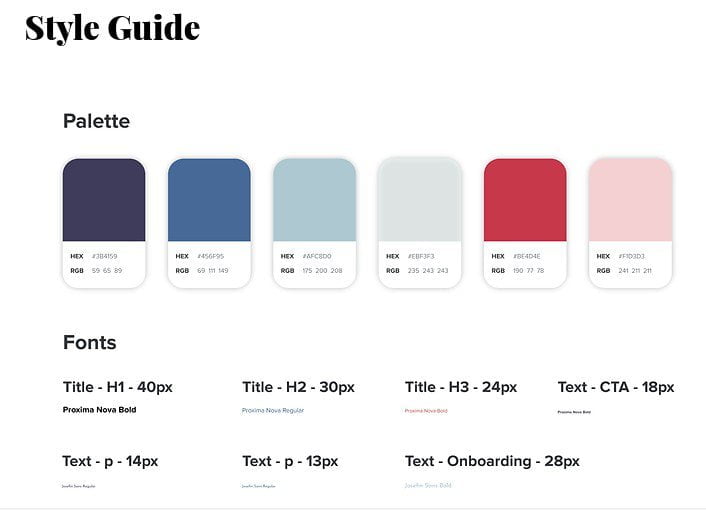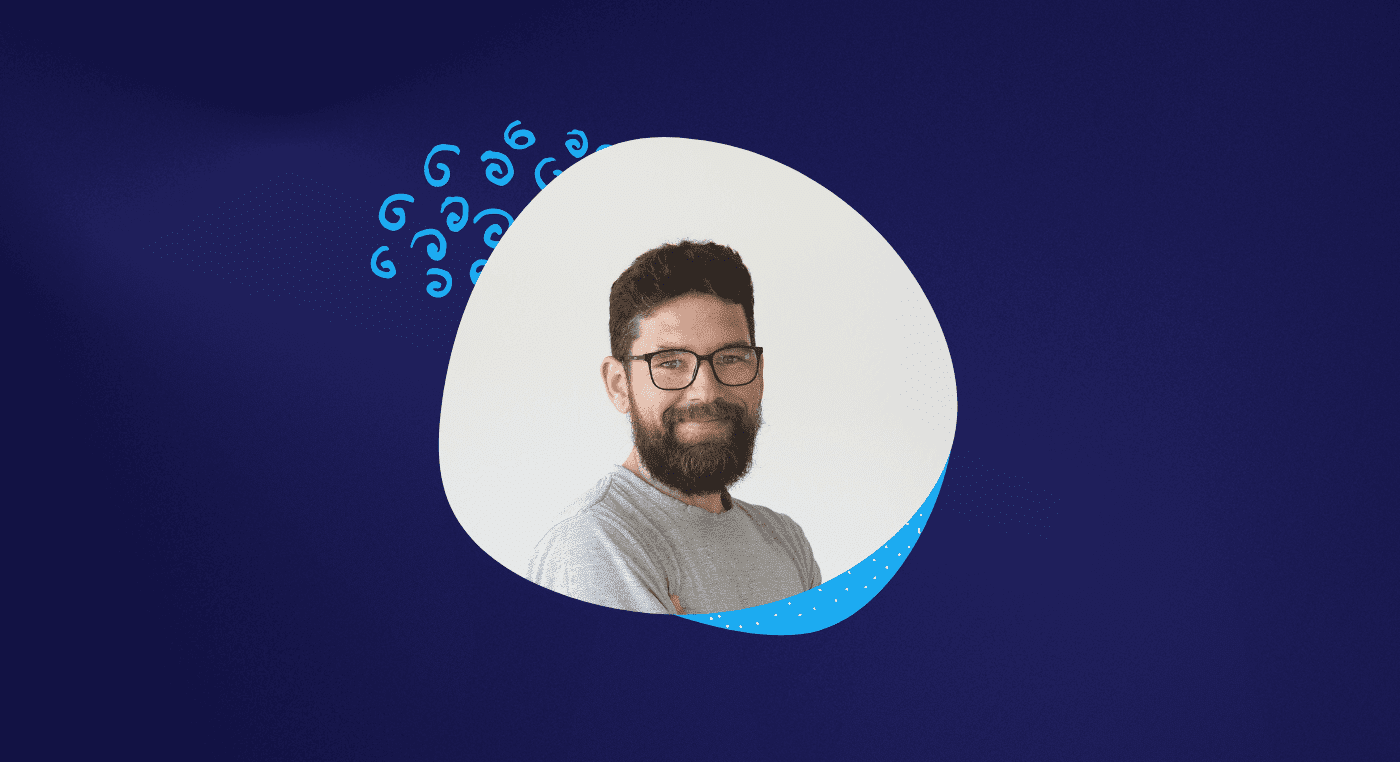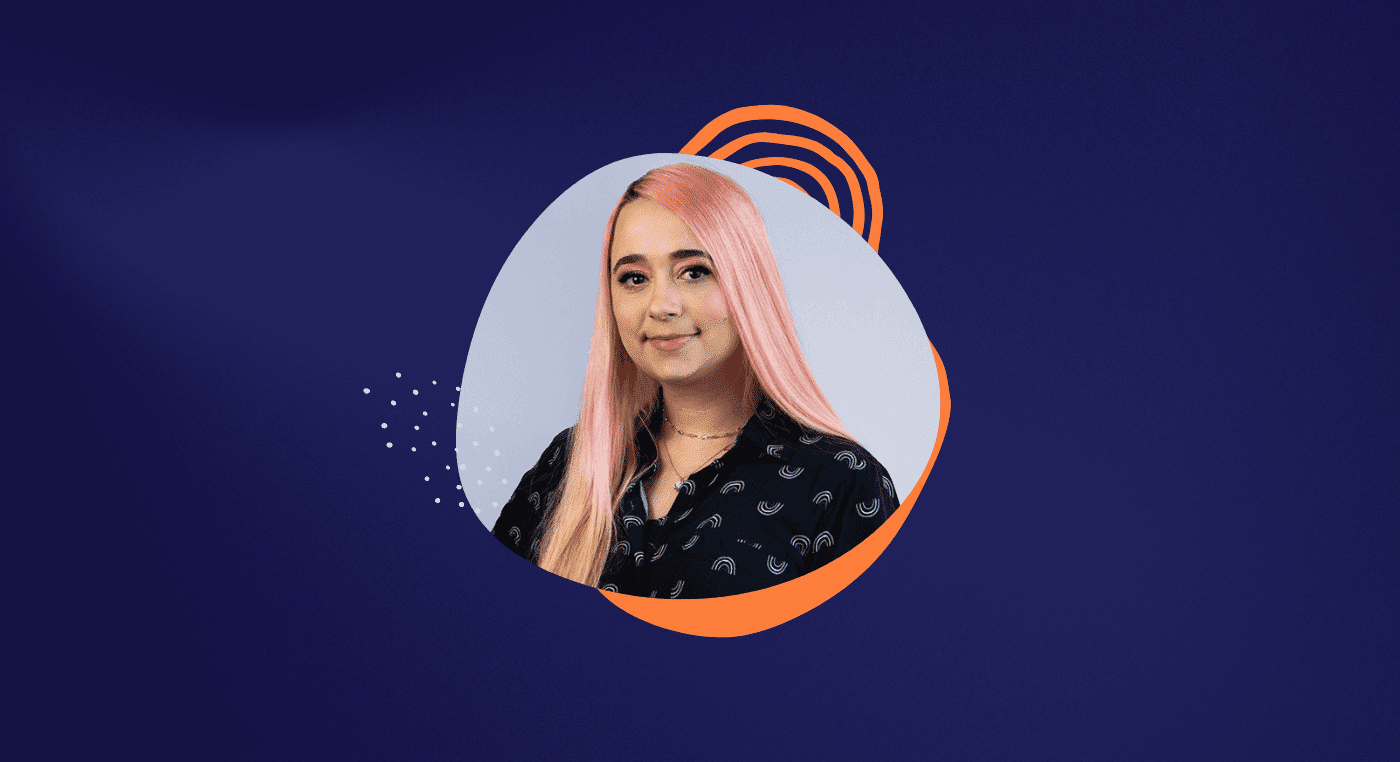Petra, who holds a degree in Product Design and is a student of the Mastering Interface Design (MID) program, came to share with us a little about her story and struggles in pursuit of the long-awaited “Yes” to finally start her career in UX.
She tells us about the beginning of this journey, from discovering where she fit professionally to getting her first job in UX, at the startup Runrun it.
Petra also talks about what it was like to dedicate herself to her studies during the pandemic, how to plan for each step, the importance of planning each step, crafting a resume that tells a compelling story, and turning negative feedback into valuable insights.
Reading Tip: How To Use Storytelling To Promote Your Career
Petra, please tell us a little about yourself
I'm Petra, I majored in Product Design, and discovered UX halfway through the course when I talked to a professor. From this conversation, I got involved with a research project and began to read about the subject and became more and more interested.
I also worked during that time as a graphic designer until I was able to make the transition to the area of Product Design, to UX/UI.
And what made you choose the UX area?
I liked the research part, talking to users, and also wanted to think more about the product strategy. I explored many areas throughout university, but felt that I did not fit well.
So, from a conversation with a professor, in which he advised me to research UX, I started reading about the subject, participating in events, and even talking to people who worked in the area.
That's when it became clear to me that this was what I wanted. I liked it way too much. It was also at this time that I came across Aela and began to follow the contents.
Reading Tip: UX Research Data Analysis: A Step-By-Step
So you were following our content before taking the course?
Yes, mainly on Medium. I found lots of Aela's content there, and also on Instagram, and I also started following some people who were students at Aela.
When I was deciding whether I would really go into UX or not, I talked to some Aela students, asked them about the course and they recommended it to me!
They said the mentors were always very present, which is true, and I also asked other people, they always praised the school. So I decided to follow that path.

There are several ways to get into the UX field, what made you start with the MID program?
I was lost in the middle of college and realized that I really enjoyed the research aspect. I wanted to find something that combined that with strategy.
At the same time, I wanted to do something more objective, more hands-on. I even thought about consultancy in the field of design and physical product, but I still wasn't happy because it wasn't what I liked.
I was also torn between going into digital product or service design, but again, I longed for a practical approach.
It became clear that I wanted to map user problems, understand them deeply, and bring a solution to them!
Reading Tip: Student Testimonials: What Do They Say About The MID program?
How was the transition process involving college, work, and UX?
When I was about to finish college, I started looking at job opportunities, but I knew I needed to learn more before applying for a job in UX.
It was also hard to find remote job opportunities at the time, and there weren't many options in the city where I live.
That's when I decided to try a position in Graphic Design, which was the closest to what I wanted, and I could also learn more about UI which I didn't have much practice in, since during college I had dedicated myself more to UX studies. So I started working at an advertising agency, in the Marketing department.
After a while, I began looking for other job opportunities again, but the feedback I received was that I still needed to deepen my knowledge in UX/UI.
So I decided to stop and focus, to follow a single path, a more formal way of studying. That culminated with the time of the pandemic, when I was laid off from the agency, and that was when I dedicated myself to studying so that I could, after a few months or even years, reapply for UX/UI jobs.

How long did you study, from the beginning of the MID until you got your first job in the field?
I joined the MID in June/July of 2020, and it took me until March of 2021 to get a job offer.
I spent six months focused solely on studying, without applying for jobs. After that period, I began looking for job opportunities again.
Reading Tip: How To Create A Style Guide
How did you organize your studies during the pandemic?
It was really difficult, I was very anxious during the pandemic, everything was very uncertain. But I decided to take it slowly and intensify as it became a habit. For example, in the beginning I studied only in the morning, and in the afternoon, I took time to read.
Gradually, I started focusing more and more on studying, dedicating more time to it. I studied for six, seven hours., Since I wasn't employed, I looked at it as a job.
I had a goal of two months for each project. As I delivered the projects and waited for feedback, I would take the time to read some recommended books.
I read the material, but I was careful not to read everything at the same time so I wouldn't get that FOMO (fear of missing out) feeling, “oh my God, I'm missing this or missing that”.
So I was careful not to get too anxious, and it helped me a lot to focus on each level; if one level worked on one subject, I would turn my reading to that topic only, in the next stage I would focus on another subject, and so on.

Great tip! And when did you think it was time to try a position in UX again?
It was a long period from the time I started applying until I actually received an offer. During this time, I learned a lot by talking to many colleagues who gave me valuable tips.
There was even one colleague who asked what level I was at – I was at level 3 – and gave me an advice. That it was for me to start building my portfolio, that it would take time, and I had to do it slowly. And that little by little I would conquer things, I would get feedback, and it is a process that usually takes time.
I followed his suggestion, started creating my portfolio little by little, filtering the information in a concise way so that recruiters could understand, and I was also asking people to evaluate, asking what they thought.
As I participated in processes, I was able to collect feedback. In the beginning I received many 'no's' and didn't understand why. When I started asking for feedback, I understood better and it allowed me to improve.
I also listened to several podcasts about how to build resumes; how to prepare, best practices, and I adapted my resume and LinkedIn according to the advice.
The conversation we had in the one-on-one mentoring helped a lot too! It was after that that I began to get more feedback. I prepared myself better for the moment of the interview, to research more about the companies before each process, and I realized that these attitudes paid off, as I was advancing more in the recruitment processes.
Can you remember the main lessons learned in this process?
One of them was when a Head of Design told me, "make your presentation as fluid as possible; avoid putting so much stuff, tell more about your story, don't worry so much about showing graphics, we want to understand your process, focus on that".
This was one of the biggest lessons learned in this process because I used to worry too much about putting images and text, and forgot about storytelling. So, when he said that and I began to change my presentations, it also helped a lot.

And how is the interview process for the UX area? Did you have interviews, tests, whiteboard challenges?
Before Runrun it, I participated in many processes that required me to do different things. They asked for cases, whiteboard challenges, and there were processes that I was asked to deliver complete projects in two days!
I really liked the process at Runrun it, the people from the beginning made me very comfortable. I had to present my portfolio cases and after that they asked me questions about my process.
It was very nice and calm because I didn't feel pressured like in other processes. I felt that it was a good sign, I thought everybody was very human. They also asked me about Aela, about the case studies, and I spoke to them in a very natural way.
It was not a long process, I soon received an answer and feedback after each step, so it was not something that generated anxiety.
In the end, I received the proposal from the Head of Design and I was very happy with the choice of the company, because when I started working, I saw that the organization was in fact humanized and I discovered that this also weighs and says a lot about a company.
Reading Tip: Benchmarking: How To Conduct One?
How has it been working with UX, aligning expectations and reality?
My onboarding was really nice, I got to meet some great people.
The environment is very good, we work in squads, so I'm very focused on one type of user.
I also learned and continue to learn a lot from other people, especially in the product area, where there is a lot of exchange of ideas. Even though it is remote, people don't work separately.
It is interesting because before the pandemic, the company was not remote, and they adapted very well to this format. This made it easy for me to adapt.
We have a leader designer that is always present, and I learn a lot from him. The developers are also part of the process, which is great because everyone is willing to work together. I was afraid of having a bad-tempered developer who might not like to participate in the process.

If you could go back in time, what would you say to Petra from the past when she discovered the UX/UI area?
I would tell her to take it easy, to be more strategic, to go slower – to take baby steps.
Porque o sim vai chegar, ele sempre chega. E foi muito bom eu ter esperado, ter recebido muitos ‘nãos’ antes do sim, porque com eles eu pude aprender e evoluir.
The "yes" will eventually come, it always does. It was so good that I waited, that I got many 'no's' before the yes, because of these negative responses I had the chance to learn and evolve.
For me, this is crucial. Having a well-defined strategy, thinking clearly about what you want, and keeping in mind that it may take time. If you want a good opportunity, it may take a while to arrive, but when it does, it will be amazing!








